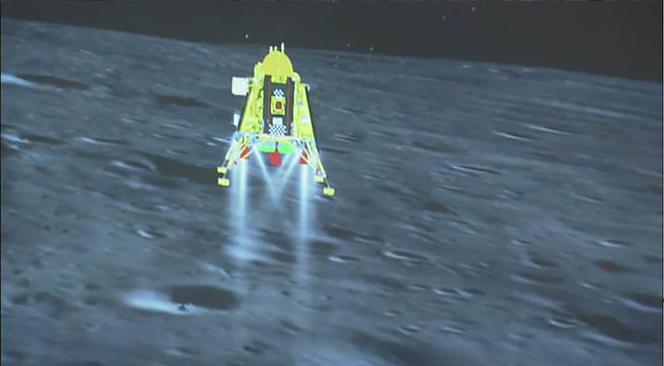


At 14:34 Central European Summer Time, India joined the exclusive club of countries that have landed a spacecraft on the Moon, after the USA, the USSR and China. For around 20 minutes on Wednesday, August 23, the country remained riveted to its screens. All eyes were on Chandrayaan-3, whose Vikram lander began its crucial descent towards the Moon. The spacecraft, which gradually slowed, finally landed gently near the south pole, an as yet unexplored region. A world first, and yet another milestone in the history of India's space program.
This was the second attempt. In 2019, a first Indian mission failed after the craft entered orbit around the Moon, but lost contact with the team on Earth.
Cheers and applause rang out in Bangalore on Wednesday from the control center of the Indian Space Research Organisation (ISRO). More than seven million people also followed the moon landing live on ISRO's YouTube channel. "India’s successful moon mission is not just India’s alone," said Prime Minister Narendra Modi from Johannesburg, where he was attending the BRICS summit (Brazil, Russia, India, China, South Africa). "This success belongs to all of humanity," he declared, adding "it will help moon missions by other countries in the future."
Since the departure of Chandrayaan-3 – Sanskrit for "lunar ship" – on July 14 from the launch pad in Sriharikota, in the south of the country, enthusiasm has been running high, reaching a crescendo. On Wednesday, thousands of people across India prayed for the mission's success, and schools across the country organized special ceremonies.
The Indian space mission, which cost only $75 million (€69 million) – less than the budget of the film Gravity, estimated at $100 million – has succeeded where Russia failed four days earlier. Luna-25 crashed on Saturday, August 19, two days before its scheduled lunar landing in the same region, following an uncontrolled shift in orbit. The failure was attributed to a loss of expertise on the part of Roscosmos, the Russian space agency, due to the long hiatus in lunar research following the last Soviet mission to the Moon in 1976, and the Kremlin's lack of interest in this field.
ISRO, founded in 1969 with a relatively modest budget, excels in frugal space engineering. It has helped strengthen the country's weather forecasting and telecommunications capabilities. The private space sector is booming. "This is the genius of Indian engineers," enthused Mathieu Weiss, space advisor and representative in India of the Centre national d'études spatiales (CNES). "On Wednesday, they paved the way for low-cost, cheaper and simpler exploration, and we can learn from their approach."
You have 39.95% of this article left to read. The rest is for subscribers only.
